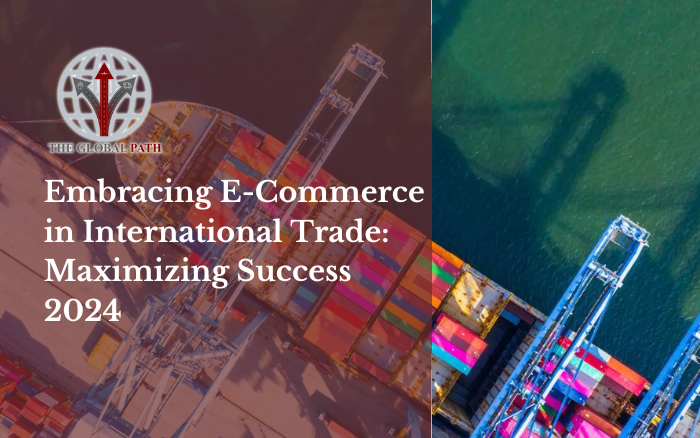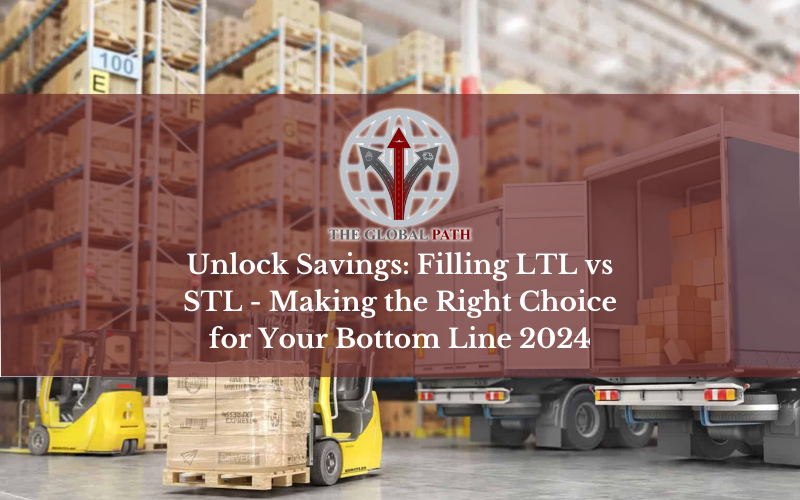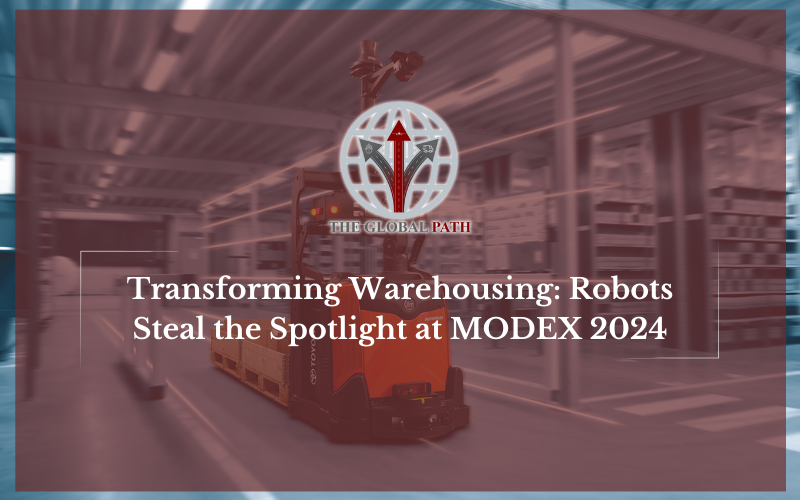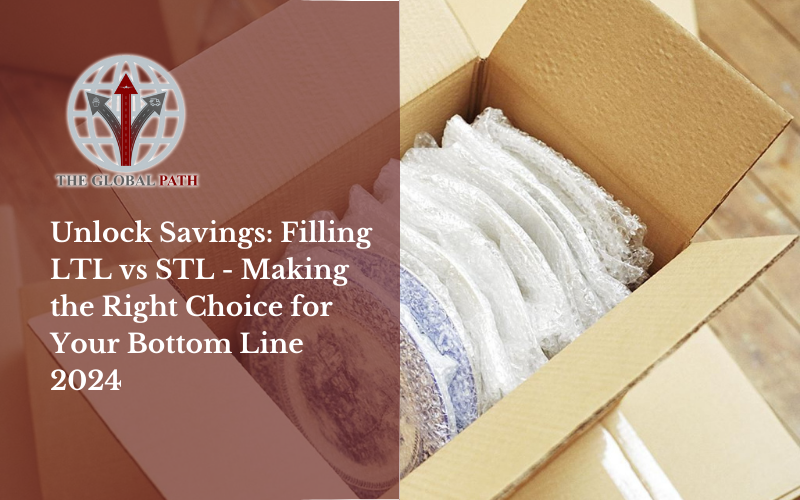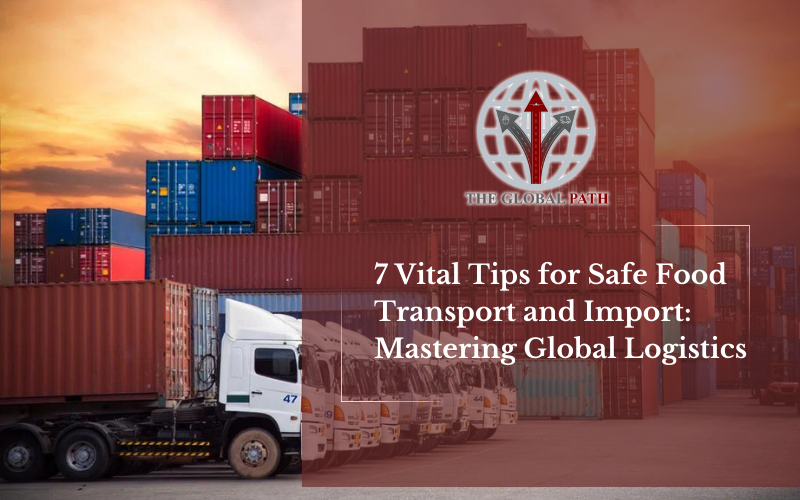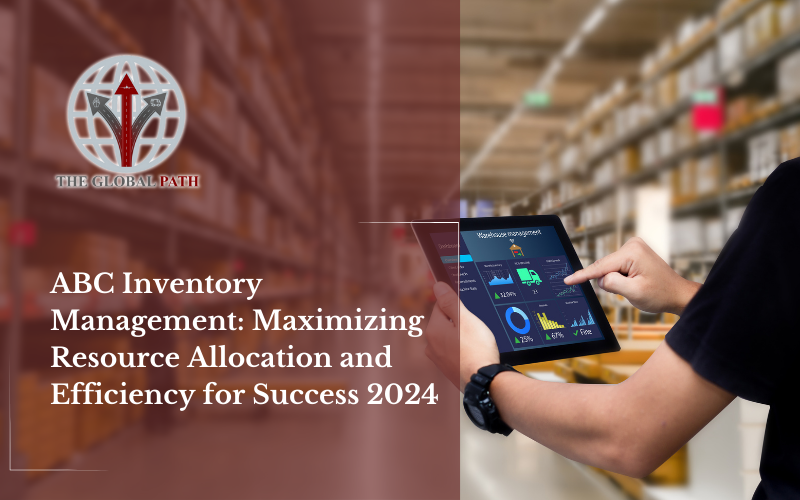Imagine the world back in 1900’s or how you read in novels and watch in movies, trade and supply chain relied on ships and other means of travel and only the business men had to make good connections across the borders to sell their products and services but still they were only handful of influential people who were carrying out trade this way others were relying on the limited opportunities they were getting in their country. But after 2000’s world saw a 180 degree turn in trade trends.
In today’s globalized world, e-commerce has become a powerful force for promoting international trade. Nowadays, companies of all sizes can reach a wider audience and access international markets than ever before, thanks to the rapid expansion of digital marketplaces and online platforms. This blog will take a dig at examining the important part e-commerce plays in promoting global trade as well as the advantages it offers to both consumers and companies.
What is E-Commerce?
Electronic commerce, or e-commerce, is the exchange of money or data via an electronic network, usually the internet, for the purchase and sale of goods and services. There are four main categories of e-commerce transactions: consumer-to-business, business-to-business, business-to-consumer, and business-to-business.
The internet powers e-commerce. Online retailers are accessed by customers using their own devices. They are able to browse and place orders for the goods and services those stores provide.
The customer’s web browser exchanges data with the server hosting the e-commerce website during the order placement process. Information about the order is sent to the order manager, a central computer. After that, the information is sent to databases that control inventory levels, a bank computer, and a merchant system that controls payment information by using payment processing apps like PayPal. It returns to the order manager at the end. This guarantees that there is enough stock in the store and money from the customer to complete the order.

The order manager notifies the store’s web server once the order has been validated. The customer is notified that their order has been processed through the display of a message. The warehouse or fulfilment department receives order data from the order manager, informing it that the product or service is ready to be shipped to the customer. At this point, the customer receives digital and physical goods, or access to a service is provided.
E-commerce platforms and Marketplaces:
The two main online business models are e-commerce platforms and marketplaces, each with specific benefits and drawbacks. But the distinction between the two is becoming more hazy due to the popularity of hybrid models. The way e-commerce platforms and marketplaces handle handling transactions between buyers and sellers is the primary difference between them.
Managed platforms, sometimes referred to as marketplaces, offer a full range of services, such as delivery and payment management. With a focus on bringing buyers and sellers together, marketplaces offer more flexibility and less control over the final product.
In other words, marketplaces provide end-to-end user experiences and business facilitation for vendors as well as customers, all while retaining total control over financial transactions.
Consider marketplaces as analogous to department stores, where different suppliers exhibit their goods in a common area and sell them at the register subject to agreements.
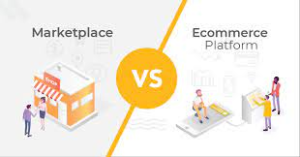
E-commerce platforms, on the other hand, are more like a thrift store, where clients visit different vendors and deal with them one-on-one. While market administrators verify each seller, vendors manage their own sales procedures and other aspects of their business independently.
You must look at how your company manages transactions between buyers and sellers and how much control it has over these transactions in order to decide if it functions as an e-commerce platform or a marketplace.
You’re probably acting as a marketplace (or managed platform) if your company controls the financial transactions, oversees the delivery services, and offers a dependable end-to-end user experience.
On the other hand, you’re probably an ecommerce platform if your company links buyers and sellers and permits more freedom and flexibility in the transaction process.
Examples of E- Commerce and Marketplaces:
Here are some examples of well-known online marketplaces to help you comprehend the main distinctions between ecommerce platforms and marketplaces:
Etsy: which specializes in handcrafted jewelry, crafts, and decorations, is the best illustration of a traditional marketplace. It provides a branded online marketplace where millions of vendors can list and sell their goods in a single digital location that functions and feels like an online store.
Amazon: Although it provides a range of services, Amazon is still a well-known online retailer with a large selection of goods, including electronics, books, clothes, and household goods.
eBay: It is yet another well-known online store where customers can purchase and sell goods through fixed-price listings or auctions.
Fiverr: Fiverr is an online marketplace that links people in need of freelance services, like copywriting or graphic design, with independent contractors.
Alibaba is a vast online marketplace that connects companies with suppliers globally.
And now let me give you some glimpse of E-Commerce sites :
Shopify: One of the most well-known e-commerce platforms is Shopify, which lets you build online stores, control inventory, take payments, and personalize your websites.
WooCommerce: With the help of the e-commerce plugin WooCommerce, you can create an online store with WordPress that includes features like shipping options, payment processing, and inventory management.
Magento: Compared to Shopify or WooCommerce, Magento is an open-source e-commerce platform that provides more adaptable and customizable options for building online stores.
Squarespace is a website builder with e-commerce capabilities that lets you create visually stunning online stores with a variety of features and customizable templates.
Similarly, world is innovating day by day and few companies have also introduced hybrid models and I think they are very successful in creating the fusion. Here are few examples:
The website Airbnb links vacationers with hosts who are looking to rent out a room or their entire house for a short- or long-term stay. Airbnb serves as a middleman, managing the processing of payments and offering a host-guest communication platform.
In addition, Airbnb collects a commission on each transaction and establishes guidelines and standards for both hosts and guests, such as those regarding refunds and quality requirements.
Same is the case with Uber, Lyf, Foodpanda and some loan platforms.
Benefits of e-commerce:
The availability, accessibility, speed of access, variety of products and services, and global reach of e-commerce are its advantages.
24/7 Available: Availability all day and all night. E-commerce websites are accessible around-the-clock, allowing users to browse and shop whenever they choose, barring planned maintenance and outages. Brick and mortar establishments typically have set hours of operation and occasionally close completely.
Access speed: Crowds in a physical store can slow down customers, but depending on the compute and bandwidth requirements of both the consumer device and the e-commerce site, e-commerce sites operate quickly. In a matter of seconds or less, the product, shopping cart, and checkout pages load. A typical online purchase takes less than five minutes and only needs a few clicks.
Large selection: “Earth’s Biggest Bookstore” was Amazon’s original tagline. Because it was an online retailer rather than a physical store that had to stock every book on its shelves, it was able to make this claim. Brands can offer a variety of products through e-commerce, and after a purchase is made, the products are shipped from one or more warehouses. Clients are probably going to find what they’re looking for easier.
Quick accessibility: When purchasing in a physical store, customers may have trouble finding a specific item. Users of the website can quickly locate the product by using the search function and real-time browsing of product category pages.
Wide Audience: Customers that physically visit brick and mortar stores are the target market for these businesses. Businesses can sell to anybody with internet access through e-commerce. A company’s consumer base may grow as a result of e-commerce.
Reduced price. The expenses associated with operating physical stores, such as rent, inventory, and cashiers, are avoided by pure play e-commerce companies. However, they might have to pay for shipping and warehousing.
Easy Customization: Customization and product endorsements. Online stores have the ability to monitor a user’s past browsing, search, and purchase activities. They can gain insights into target markets and offer tailored product recommendations using this data. Some instances of the application of these insights are found on Amazon product pages under the headings “Frequently bought together” and “Customers who viewed this item also viewed.”
Overcoming Challenges in Cross-Border E-Commerce:
The perceived challenges of online shopping are the occasionally poor customer service, the inability for customers to see or touch products before making a purchase, and the lengthy shipping wait times. Problems with security are another possibility.
Limited client support: In a physical store, customers seek assistance from a clerk, cashier, or store manager when they have questions or concerns. Customer service in an online store may be scarce. The website might only offer assistance during specific times, and its online service options might be confusing or unable to respond to particular queries.
Limited reviews and experience of the product: While looking at pictures on a website can give you a decent idea of a product, nothing compares to actually using the product—for example, picking up a guitar, evaluating a television’s picture quality, or trying on a shirt or dress. Online shoppers may purchase items that are not what they expected and need to be returned. There are instances where the cost of returning an item to the retailer is borne by the customer. Customers should be able to inspect and test e-commerce products more easily thanks to augmented reality.
Safety and Security: Hackers with experience can construct websites that look real and purport to sell well-known goods. Rather than that, the website either sends consumers phoney or counterfeit versions of those goods or just steals credit card information. Risk exists on legitimate e-commerce sites as well, particularly when users store their credit card details with the merchant to facilitate repeat purchases. Threat actors might steal that credit card information if the retailer’s website is compromised. A retailer’s reputation may suffer from a data breach.
If the companies can get over these challenges or atleast minimize them e-commerce will further flourish.

Conclusions:
Putting everything in a nut shell, e-commerce has revolutionized global trade by providing consumers and businesses with previously unheard-of opportunities. Despite obstacles like limitations on customer service and security worries, there is a tones of room for expansion and innovation. Through the adoption of digital transformation and the resolution of these issues, companies can prosper in the international market. E-commerce is changing how we connect, buy, and sell internationally. It’s not just the future; it’s here.

